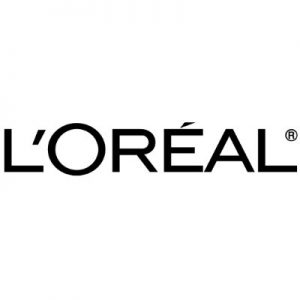In late November, the Santa Barbara, CA-based hair treatment developer Olaplex LLC filed a court action accusing French cosmetics giants L’Oreal SA (EPA:OR) of patent infringement and false advertising. The suit involves hair products known as bond builders which help to protect hair while that hair is being treated with bleach. The lawsuit has been filed in the U.S. District Court for the Central District of California (N.D. Cal.).
The bond builder hair treatment product developed by Olaplex is useful to those who are undergoing bleach treatments to whiten hair. Bleach can whiten hair but also damages hair at a molecular level, leaving it more susceptible to tangling and more fragile, causing strands of hair to break more easily when brushed. Olaplex’s bond builders help to restore damaged hair by repairing disulfide bonds broken during the bleaching process using a chemical known as bis-aminopropyl diglycol dimaleate.
According to media reports, Olaplex’s lawsuit alleges that L’Oreal’s own bond building hair treatments, such as the Smartbond system for coloring and bleaches, is a misappropriation of Olaplex’s own proprietary technology. Coverage of the legal action provided by MarketWatch indicates Olaplex argues that L’Oreal is profiting from technology it first came into contact with in 2015, when L’Oreal discussed a possible takeover with Olaplex. After seeing Olaplex’s proprietary technology, including an unpublished patent application and Olaplex’s marketing strategy, Olaplex alleges that L’Oreal ceased with its acquisition efforts after signing a non-disclosure agreement with Olaplex. About a year later, L’Oreal began selling a series of three hair treatment products infringing upon Olaplex’s intellectual property related to bond builders, according to reports.
Case information made available through Innography shows one patent-in-suit in this case: U.S. Patent No. 9498419, titled Keratin Treatment Formulations and Methods. The patent is issued to LiQWD, the professional hair care marketing division of Olaplex and listed as a second plaintiff in the L’Oreal case. It claims a method for bleaching hair which involves mixing a formulation having an active agent with a bleaching composition and applying the mixture to the hair; the active agent concentration in the formulation can range from 0.1 percent by weight up to 50 percent by weight. This results in an innovative hair treatment which can be applied once monthly, or more, to restore hair which has been broken during hair coloring or permanent wave treatments. The ‘419 patent is one of four active U.S. patents held by LiQWD; Olaplex doesn’t appear to own any patents itself, according to Innography’s patent portfolio analysis tools.
For it’s part, it looks as though L’Oreal will vigorously defend its position in court, at least at the outset. The Wall Street Journal recently reported on this case and its coverage included a quote from a L’Oreal spokeswoman indicating that the company will “strongly oppose the merit of these claims” as well as the validity of the patent. Along with Smartbond, the suit targets L’Oreal’s marketing of Matrix Bond Ultim8 and Redken pH-Bonder.

![[IPWatchdog Logo]](https://ipwatchdog.com/wp-content/themes/IPWatchdog%20-%202023/assets/images/temp/logo-small@2x.png)


![[[Advertisement]]](https://ipwatchdog.com/wp-content/uploads/2024/04/Patent-Litigation-2024-banner-938x313-1.jpeg)
![[Advertisement]](https://ipwatchdog.com/wp-content/uploads/2024/04/UnitedLex-May-2-2024-sidebar-700x500-1.jpg)
![[Advertisement]](https://ipwatchdog.com/wp-content/uploads/2024/04/Artificial-Intelligence-2024-REPLAY-sidebar-700x500-corrected.jpg)
![[Advertisement]](https://ipwatchdog.com/wp-content/uploads/2024/04/Patent-Litigation-Masters-2024-sidebar-700x500-1.jpg)

![[Advertisement]](https://ipwatchdog.com/wp-content/uploads/2021/12/WEBINAR-336-x-280-px.png)
![[Advertisement]](https://ipwatchdog.com/wp-content/uploads/2021/12/2021-Patent-Practice-on-Demand-recorded-Feb-2021-336-x-280.jpg)
![[Advertisement]](https://ipwatchdog.com/wp-content/uploads/2021/12/Ad-4-The-Invent-Patent-System™.png)






Join the Discussion
One comment so far.
Eric Berend
December 10, 2016 01:21 pmAt the outset, the circumstances described appear to fit the “Lucy and the Football” metaphor of the exploitation of inventors by big business’s beloved ‘efficient infringement’ strategy.
If these alleged facts as described above are true, then this is a ‘textbook’ application of this predatory business model.
Why can it not be argued that this constitutes fraudulent inducement for the purpose of unjust enrichment? Just how, does such a blatant exemption become justified? Are not arguments of “constructive” harm, not utilized to win cases in courts across the land; if not every day; then, every week, at the least? And, in particular: in areas of the law pertaining specifically to property, such as possession (e.g., evictions), for instance?
This deplorable and criminal (this giant racket fits conspiracy laws) conduct, is yet another, further demonstration to inventors: that the U.S. has now retreated to medieval times, when honest scientific and engineering discovery and its resulting knowledge was subject to persecution, including Inquisitions.
In fact, the PTAB rather resembles an Inquisition – against patents and their owners.